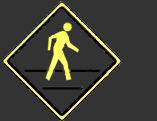free 103point9 :: interview
by J. Gabriel Lloyd
free103point9 is a 501(c)(3) non-profit media arts organization promoting experimental sound works and audio transmissions. Founded in 1997, free103 supports artists who explore transmission mediums as a means for creative expression. free103point9 also serves diverse public audiences through programs including an online radio station, a distribution label, a performance/exhibition/transmission series, education initiatives, and a preservation program.
From May 13th through May 16th, members Matt Bua, Matt Mikas, and Tom Roe of free103point9 will be performing Of the Bridge at the Psy.Geo.Conflux, a multi-day psychogeographic event in New York City. The performance will combine found sounds from around the Williamsburg Bridge and from contact mics on the bridge to embellish its own unique soundscape. Of the Bridge is a work originally composed in 2001 by these three members for the Palm Beach Institute of Contemporary Art in Lake Worth, Florida, as a video installation and a performance. It was shown again in 2003 at “I’ve got an answer/I’ve got an anthem” I.A.E. In Portland, Oregon. The trio produced an LP/CD called “Of The Bridge” that received NYSCA distribution funding.
As a participant myself in psychogeographic events, the potential of utilizing found sounds that are directly related to a specific place peaked my interest. The application of the project for other non-psychogeographic shows made me wonder, though, about how the piece was to be adapted. I contacted Matt Bua in hopes of answering this and a few other questions. (free103point9 is a very busy group, so this interview transpired over a few weeks of e-mails. The questions are answered and elaborated upon by Tom Roe and Matt Bua).
Being involved with the psychogeographers brings a new focus upon
the performance aspect of your piece as well as a new focus of people in relationship
to the place you are focusing upon (the people that use the Williamsburg Bridge
to add to the sounds, for example). Do you think these aspects are in fact
a new twist upon the creation of the work, or have you been addressing these
issues all along and now they can be in the limelight?
[Tom Roe]: I think the psychogeographic elements of the piece have always
been there, they just will be drawn out and emphasized this time out. We were
very much interested in how the Williamsburg Bridge sonically affects and
interacts with the community. All three of us either live(d) and/or work right
next to the Bridge, and it has had a large impact on our lives.
At what point did you guys have a realization of
the psychogeographic content in the piece, or any other piece you have been
working on?
[Matt Bua]: What began with Sonny taking a break from playing in the clubs,
and making the bridge his main performance space (this structure let him work
with sound over water rather then land/neutral settings) and his audience
only coincidental passer-by’s.
For the last 8 yrs, as the three of us have resided only a block away, we
watched, listened and felt the complete overhaul/rebuilding of the bridge.
One sound will stick in my head, which always happened around 1am was a single
man working on the bridge with a tool which was in the chainsaw family. Everyone
living in this area endured periods of midnight solo sawing. I had to concoct
a vision of trying to sleep in the forest while this guy was cutting down
trees. I’m sure others in the area had similar sleepless nights.
Psychogeography is often times described as being
the study of other people and their environment. Looking at “On the
Bridge”, I feel like the piece is more about your own relationships
with the space. The project becomes a projection of your relationship with
the architecture and also your personification of the architecture. Would
you agree with me that your work is about your own relationships to the space,
or do you disagree and think the work is about other people’s relationship
to this specific place and space?
[Matt Bua] I thinks (sic) now with the chance to expand the piece for the
Conflux it will take it to a place which will focus more on the other bridge
user’s relationship. The original recording was more about personal
sound collecting; the time-lapse video was mostly shot from one loft window’s
perspective. When this documentation has a chance to be scene by others who
have live in the vicinity of the bridge, the communal experience could be
stirred. When I was on the bike pathway with the contact mikes attached, I
let the people walking by listen to the sounds the bridge was producing. With
this new version, being up there directly using the bridge in the public’s
eye will create an audience integration.
To contact free103point9:
Packages: 302 Bedford Ave., #261, Brooklyn, NY 11211
E-mail: free103point9@yahoo.com
Tune in around the clock at: www.free103point9.org
J Gabriel Lloyd is arecent recipient of a BFA in Sculpture at RISD. Gabriel
has a background in Industrial Design and fabrication. Gabriel’s interests
lie in hybrid art-science and other works that bridge boundires between disciplines.
